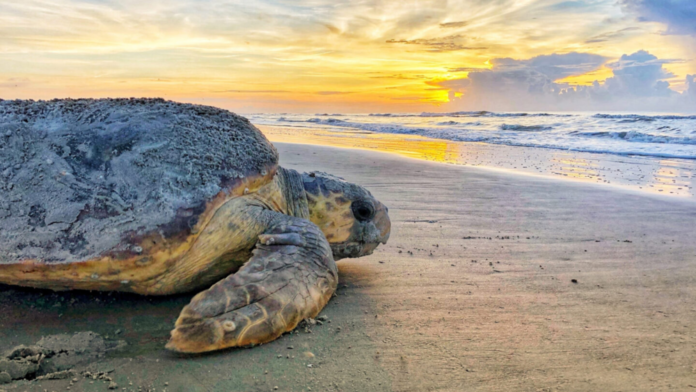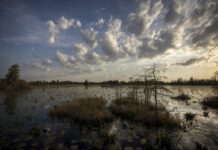
Georgia’s loggerhead sea turtle nesting season is officially underway, as four nests belonging to the federally protected species were spotted Sunday across Coastal Georgia.
The Georgia Department of Natural Resources described the opening salvo of nest sightings as a “three-island rush,” with one on Wassaw Island near Savannah, two on Blackbeard Island in McIntosh County and one on Glynn County’s Jekyll Island, where the Georgia Sea Turtle Center rehabilitation clinic is based.
“It was really exciting,” said Georgia Sea Turtle Center research manager David Zailo, on his reaction to learning that a volunteer had discovered the island’s first loggerhead nest at dawn.
“It’s a continuation of processes that have been going on for thousands of years,” he said. “And we’re working to make Jekyll Island a model system where we can balance wildlife thriving with limited development and tourism and recreational opportunities for people. So, to be able to see that continue is extremely rewarding.”

Zailo described his outlook for this year’s sea turtle nesting season as “cautiously optimistic,” pointing to the success of ongoing conservation efforts while also acknowledging how fragile the species is, even under the most favorable circumstances.
“They have to lay a lot of eggs to, in short, replace themselves since there’s very low hatchling survival,” Zailo said of loggerheads, whose female adults don’t start nesting until they reach their 30s. “And so these animals need to be able to nest repeatedly, for years upon years upon years, in order to help their population grow.”
The state’s loggerhead population has been increasing at about 4% annually since the early 1990s, according to the Georgia DNR.
However, the agency said that a computer model developed by the University of Georgia and the U.S. Geological Survey suggests that the species’ population will “plateau at current levels” for roughly the next 15 to 20 years, owing to sparse nesting levels in the early 2000s.
Last year saw a higher-than-expected sea turtle turnout: 3,431 loggerhead nests were identified. Although down from 2022’s record-high 4,071 nests, 2023’s output still doubled the 35-year average and easily surpassed the federal government’s recovery goal of 2,800 nests per year.
This article comes to Now Habersham in partnership with GPB News






